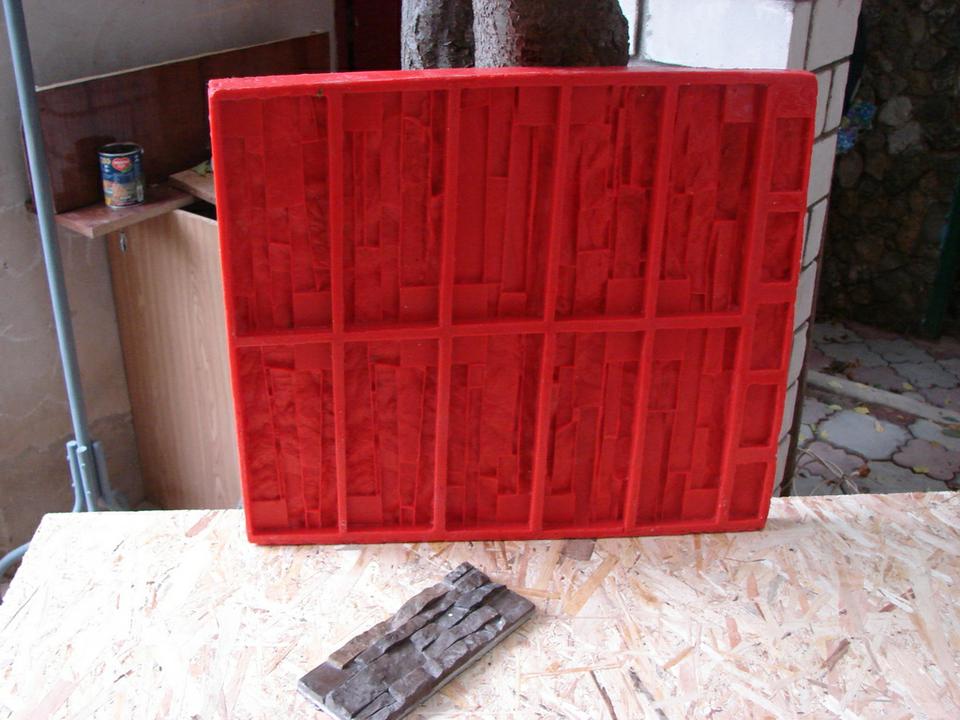Natural stone and its imitation are quite often used both in the interior and exterior. Of course, natural stone looks more beautiful and natural, but the difference in price is noticeable. A good artificial material is not inferior in quality, but when working with large volumes, the costs for it will be significant.
Stone in the interior, B&B
The most budget option is a polyurethane mold for making artificial stone - an investment that will serve you for many years and will pay for itself very soon. A mold made of cast polyurethane is a synthetic product consisting of two components that are in a liquid state. This is a special material that, after mixing in certain proportions, hardens and acquires the properties of durable rubber or silicone.
In this material, we will talk about the manufacture of a polyurethane mold for artificial stone. And in the next master class, we will proceed directly to making this with our own hands.
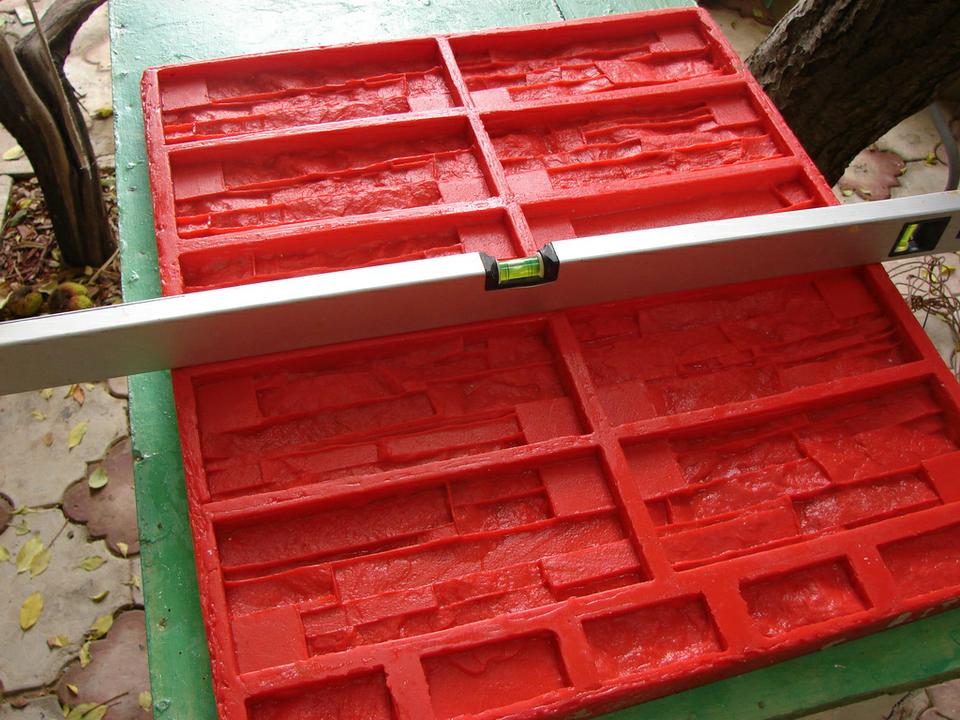
Required materials and tools:
- two-component molded polyurethane
- half a pack of artificial stone
- MDF board cuttings
- self-tapping screws
- delimiter
- household mixer
- kitchen scales
- liter bucket
- putty knife
- sanitary silicone
Making a polyurethane mold
First of all, we buy one package of artificial stone that we like in a hardware store. Usually the package is one square meter. They won't sell less anyway.
On the edge of the MDF furniture sheet, we lay out half a square of stone. You have to make sure everything fits. Leave gaps of about 1 cm between the stones. Experiment with the position. Then, one by one, glue the stone tiles to the MDF sheet using silicone.
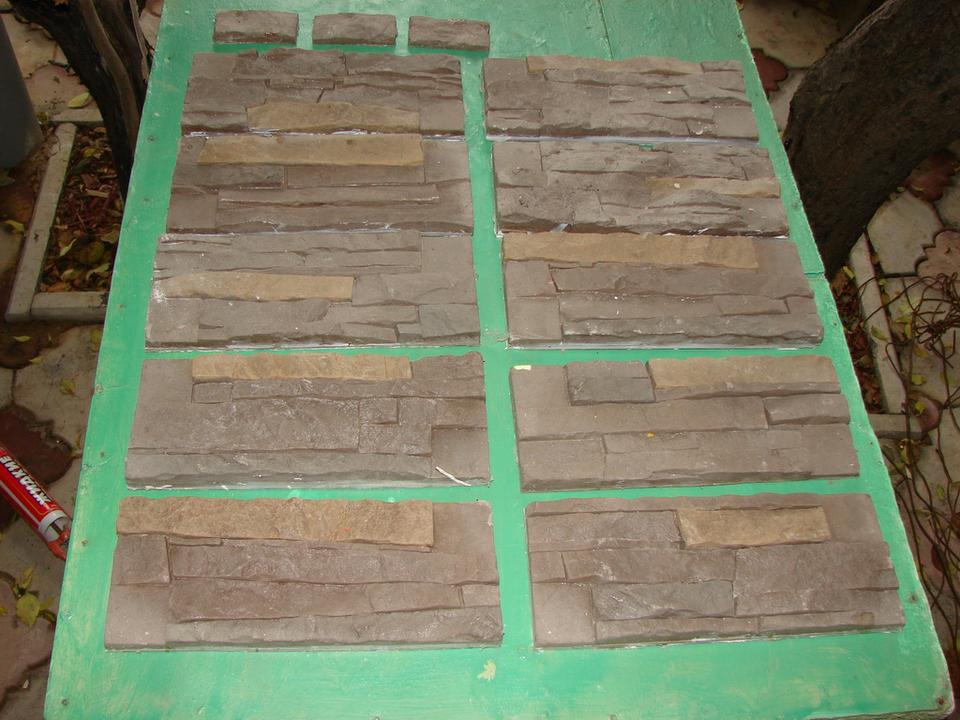
Make formwork from MDF trim or panels, a few centimeters high above the edge of the stone. Just screw them to the stone panel. Then isolate all joints from the outside with sanitary silicone. It will prevent the flow of liquid polyurethane.

Be sure to level the surface with the formwork installed on it. Thus, you will get an even shape in the future. You can lay out the formwork on the table, it is more convenient to work.
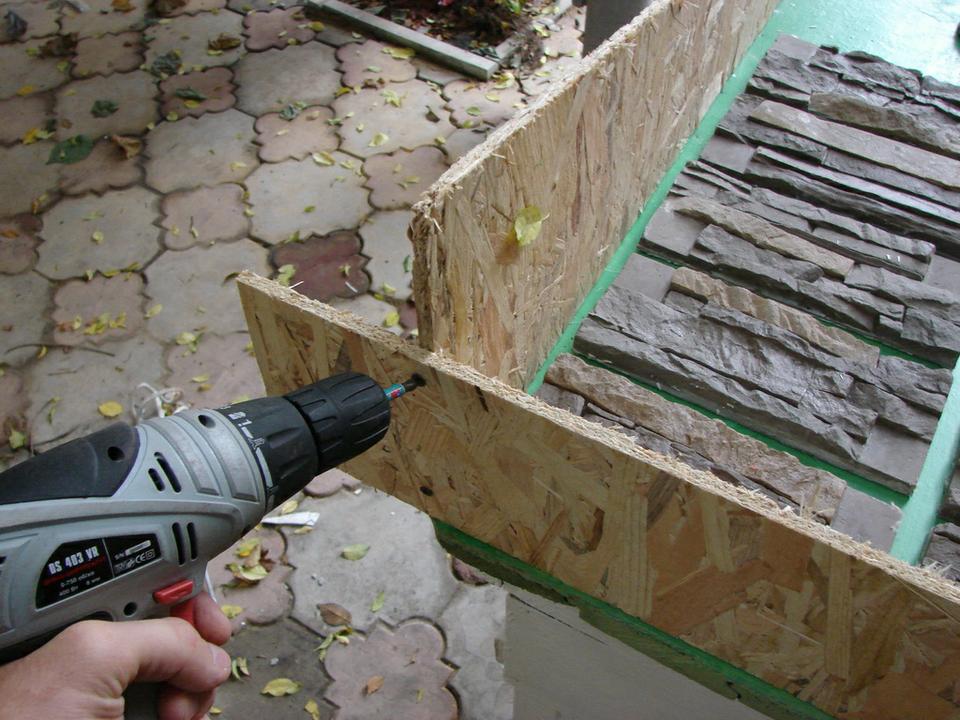
After the silicone has cured, coat the stone and formwork with a spacer. It is based on polyvinyl alcohol. When it hardens, it forms a thin film, like PVA glue. Let the separator crystallize and proceed to work with cast polyurethane.

To make the mold, I use 10 liters of Duramould ET 45A cast polyurethane. It is made in the UK, it is of very good quality and long service life.
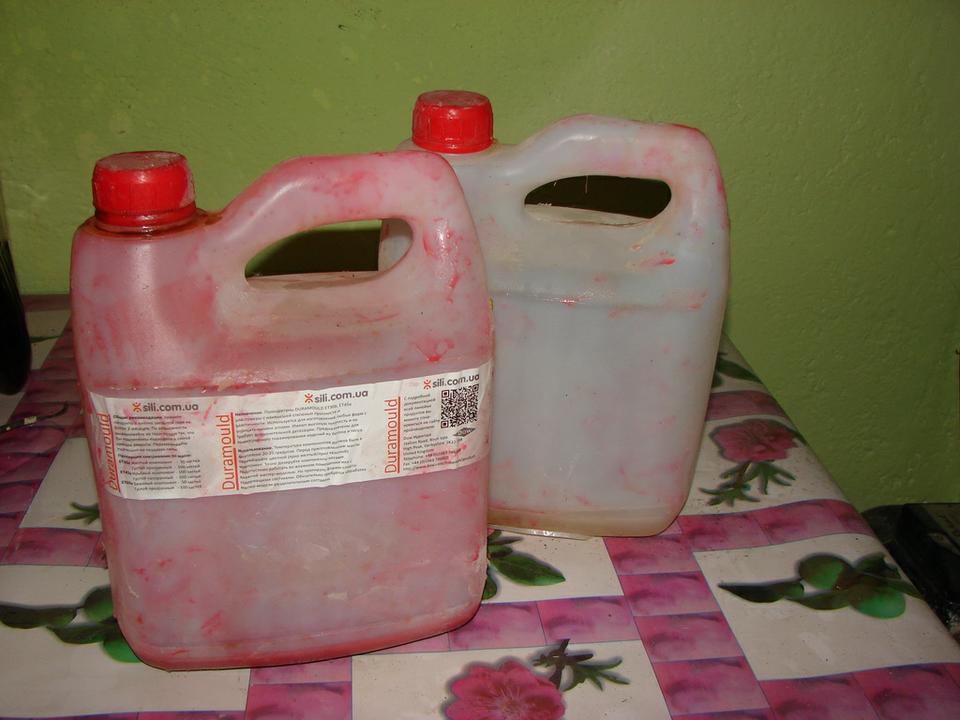
It is in two canisters of 5 liters. One part is red and liquid, the second part is transparent and more viscous. We measure out half a liter of scales from one and the other canister. We combine them in a bucket and mix thoroughly with a mixer. Then pour into the formwork.
According to the technology, liquid and mixed polyurethane must be evacuated. But hardly anyone has a vacuum chamber at home. The surface is still quite porous and embossed, so there is no need for special accuracy here. In addition, air bubbles will self-displace under the pressure of the polyurethane. Be sure to ensure that the substances from the canisters are mixed in the same proportions.
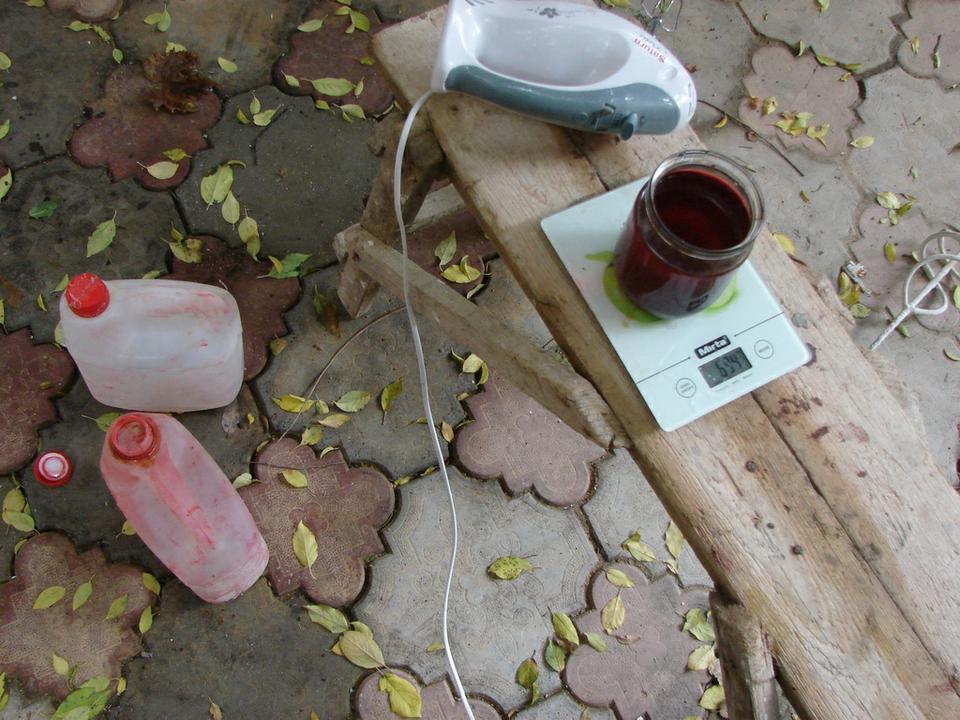
Mixing and pouring polyurethane, fill the form to the brim. Let it dry for about a day. Work with polymers should be carried out in a room with positive temperature. Ideally at least 22 degrees. Polyurethane has no special smell. But it is better to do it not at home in the kitchen.
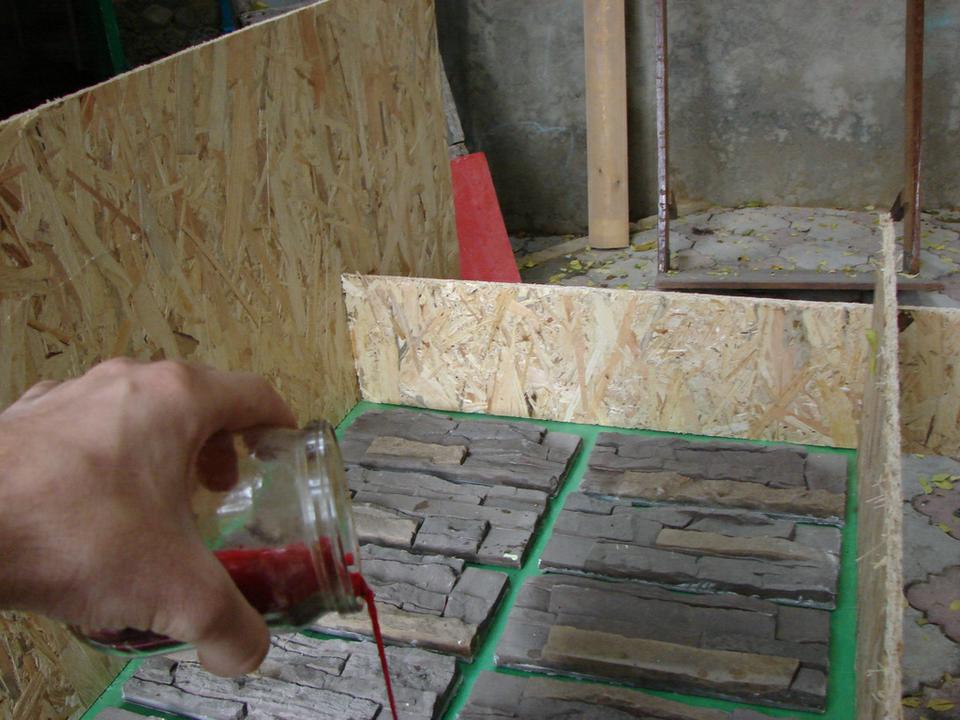
In a day, from a liquid, syrupy mass, polyurethane will turn into a solid form for casting artificial stone.
Now we disassemble the formwork, cut silicone and polyurethane with a clerical knife, in those places where it is very stuck.
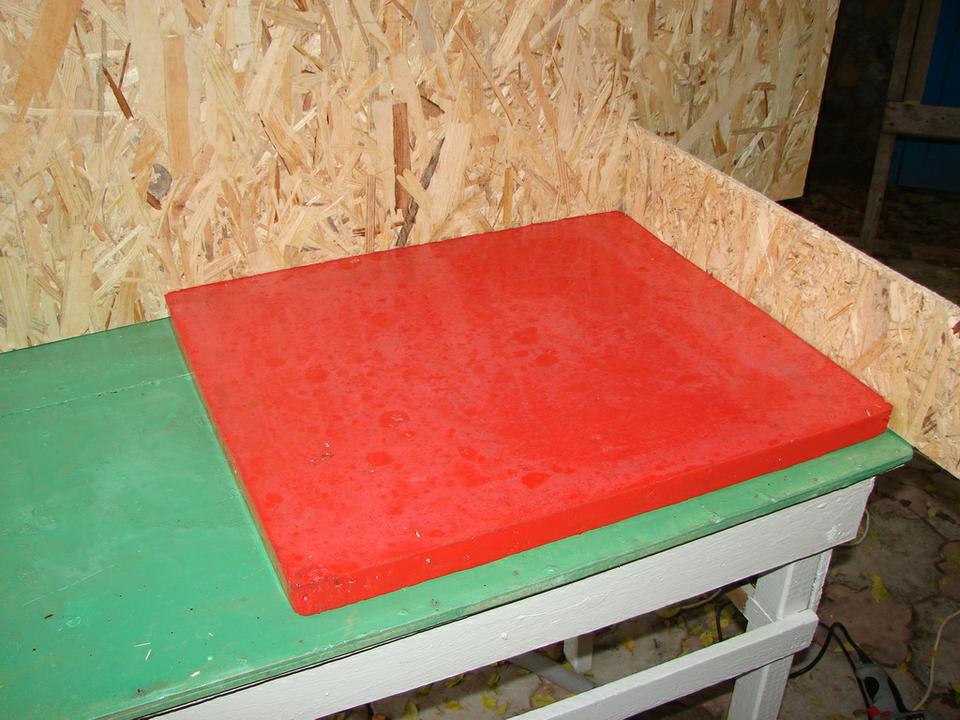
After the formwork has been removed, we tear off the form from the table. If you glued the stone tiles well at the beginning, they will remain on the table surface. If there is no polyurethane smudge under the tiles, then you will have to cut them out and squeeze them out of the mold.
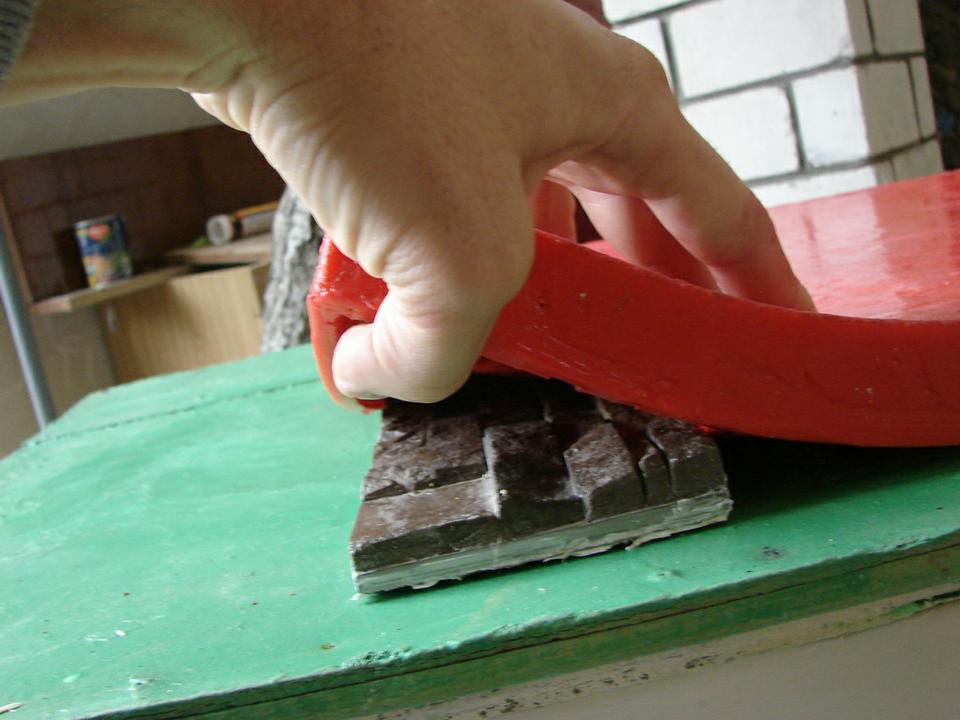
The form freed from stone tiles should dry a little more. Its surface, which has not been in contact with air, will be slightly damp or oily. Wipe it with a cloth, let it dry for a couple of hours and you can start casting the stone. In the next article, we will tell you how to do it right.
